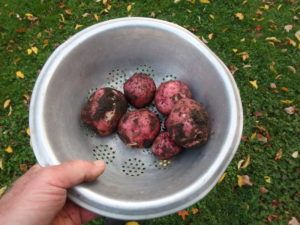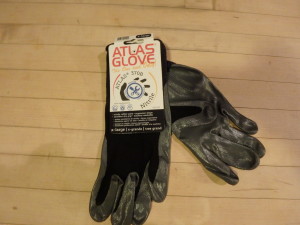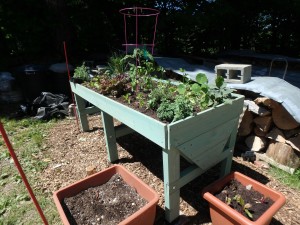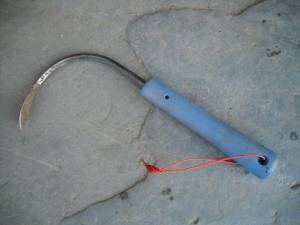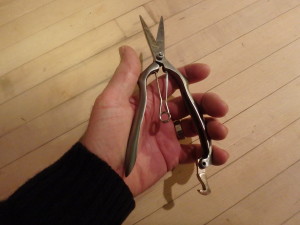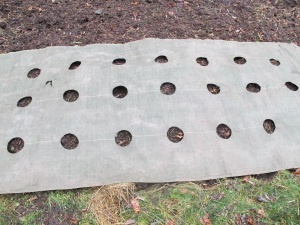Planting for the Unique Umami Flavor
Umami is the fifth flavor we humans can detect, along with sweet, sour, bitter and salty. It is much more difficult to describe or quantify than the 4 standard flavors because we haven’t been raised to recognize it. I call it the flavor of contentment. The Japanese translate it, roughly, as “deliciousness.”
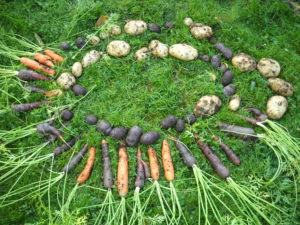 Scientists have determined that there are receptors in our taste buds that are stimulated by umami, just as there are for salty or sweet. They send signals to our brain that says, “Oh boy, something really good is here!” The orbitofrontal cortex (right above the eyes) registers a highly pleasant sensation. Yum, it says.
Scientists have determined that there are receptors in our taste buds that are stimulated by umami, just as there are for salty or sweet. They send signals to our brain that says, “Oh boy, something really good is here!” The orbitofrontal cortex (right above the eyes) registers a highly pleasant sensation. Yum, it says.
The umami flavor is created when certain amino acids that contribute to protein formation are present, notably glutamate, inosinate and guanylate. Seaweeds are highest in these components, but seafood, meats and certain vegetables contain them, too. Oh, and it is found in breast milk. Maybe that’s why we like it.
So what vegetables contain natural glutamate? Ripe tomatoes are highest of ordinary vegetables, which does not surprise me at all. Actually, dried tomatoes are even better because most of the water is gone. What else? Garlic, green peas and corn are excellent, as are beans, potatoes and carrots. Does that sound like a list of comfort foods? It does to me.
Mushrooms and fermented foods like soy sauce are good umami producers, as is cheese. Parmigiano-Reggiano cheese is particularly high, but cheddar is good, too.
If you want the highest level of flavor in your foods, grow it yourself. Pick your tomatoes dead ripe. That’s when the levels of umami-producing amino acids are at their highest.
Busy people say they have no time for a vegetable garden. Perhaps. But if you know that you can grow food that is super tasty, maybe you’d find some time. Here are 5 ways to get your umami-rich foods without dedicating your life to them.
- Get a big self-watering pot and plant one “patio tomato” in it. This pot should be roughly the size of a 5-gallon pail and have a water reservoir so it won’t dry out if you forget to water for a few days. Or go to the beach for the weekend. Fill it with a 50-50 mix of compost and potting soil. Put it in full sun in the middle of your lawn or along the driveway.
- Shiitake mushrooms are very high in umami. I have inoculated hardwood logs with spore plugs that eventually produce shiitakes. But it’s sort of like fishing, you never know when your logs will produce, or for how many years. But now companies are producing mushroom kits that come ready to go. Most of those are one-time kits that produce just one flush of mushrooms, but they’re easy.
- Potatoes are some of the easiest veggies to grow, and are good umami producers. If you want to tear up a 10-foot by 12-foot patch of lawn, you can become potato self-sufficient – for a year! You can build wide raised beds with a walkway down the middle and a little free space around the edges. Plant seed potatoes 18 inches apart and you can grow a lot of food.
- Then there is the Veg Trug. I had one last summer and loved it. About 6 feet long and 2.5 feet wide, it is a nice cedar planting trough on legs that is V-shaped in cross-section, so it is deep enough for tomatoes or potatoes. And you don’t have to bend over to pull weeds or harvest herbs. I grew lots of lettuce, herbs and one tomato. I got mine from Gardener’s Supply (gardeners.com or 888-833-1412).
- Visit your local farm stand, farmers market or, better yet, sign up now for a CSA. You don’t actually have to grow your own food just to get fresh produce at the peak of its flavor and ripeness.
The fact that we have receptors that are just for umami tells me that umami is something that is good for us. After all, our mouth also tells us when something is not good for us. We have evolved to recognize foods that are healthy. We respond well to sweets and fats because eons ago we needed calories to stay alive. Now, of course, we need to stay away from too much of those.
All this says you could and should grow your own food, and then cook it from scratch. I have written more than once that “Tomatoes are the queen of the garden.” In August I eat ripe tomatoes for breakfast, lunch and dinner. Why? I guess all this time I thought it was free will. Now I know it is an addiction to – or an affinity for – umami. Now is the time to plan your garden for the summer.
Read my twice-weekly blog at https://dailyuv.com/
Holiday Gifts for the Gardener
It’s that time of the year again: time to figure out good gifts for Uncle Albert and your sister Sadie. If they’re gardeners, gifts are easy to pick. There are plenty of items that cost from $5 to $300, and generally, one size fits all. Let’s look at some things I have used and like.
After giving a talk at the Milford, NH Garden Club recently, I bought some gardening gloves that were being sold as a fund raiser. These cost me just $5, and have already earned their keep. These are nitrile gloves made by the Atlas Glove Company. They have a waterproof palm and a stretchy, breathable fabric back. I have big hands, and the x-large size was perfect. Mine are black with silver palms, but the smaller sizes come in a variety of colors.
I don’t generally wear gloves when gardening, as most are too thick – and I like the feel of the soil – but in cold weather I do wear them. These are thin enough that I can go easily in my pants pocket and pull out my pocket knife, or feel a tender weed. The nitrile glove is the Atlas 370B series. I’ve also used a thicker Atlas glove with a natural rubber palm, the 300 series. These are both available at most gardening centers.
Does your loved one start plants by seed? Gift cards at garden centers or seed companies are nice. I get my seeds from several places: the Hudson Valley Seed Library, Johnny’s Selected Seeds, High Mowing Seeds, Renees Garden and a young company in New York State, Fruition Seeds. All have wonderful selections.
One of my favorite additions to my garden this year was a “VegTrug” from Gardener’s Supply Co. (www.gardeners.com, Item#8586918). This is a stained cedar planting box on legs, about 6 feet long and 32 inches wide that retails for $279, with free shipping. It is V-shaped in cross section with the deepest portion 16 inches deep – deep enough for potatoes or tomatoes. It stands 32 inches tall, so no bending is needed to weed or to pick.
In my VegTrug I grew one patio tomato and pretty much every kind of herb: basil, dill, marjoram, thyme, sage, purple sage, chives, oregano and parsley. I even had a nasturtium cascading over one end.
One reason I loved my VegTrug was the convenience: it allowed me to have herbs near the house in a spot not otherwise suitable for growing. And the plants grew well, although in the heat of the summer they dried out more quickly than my garden near the stream, so I watered pretty much every sunny day. It uses 380 liters of soil mix, so I made my own, a 50-50 mix of peat moss and compost. The bottom is slotted for drainage, but it comes with a woven liner to prevent soil from washing away.
Every gardener needs a good weeding tool, and every year I recommend the CobraHead Weeder, because I believe it is the best weeding tool available. This tool has a single tine that is curved like the shape of a rising Cobra. I use it to tease out grass roots, to get under large weeds (so I can loosen the soil below them and pull from both top and bottom of the weed at the same time), and for preparing soil to plant. Now it seems a part of my right hand (though it is right-left neutral). At under $25 locally or from the manufacturer (a family business found at www.CobraHead.com), this tool is tough, strong, and made in the USA.
Every year I try to learn more about growing healthy plants. This year I paid $50 to join the Bionutrient Food Association (http://bionutrient.org/), and would like to suggest giving a membership as a nice present. One of the goals of the non-profit is to educate members about how to grow food that is nutrient-rich.
Much commercial agriculture depends on adding just 3 minerals to the soil (nitrogen, phosphorus and potassium) and basically ignoring the other nutrients that plants – and humans – need to be healthy. Growing vegetables year after year removes micronutrients from the soil that need to be replaced. The BFA offers information and workshops that I believe will help me to grow better food and stay healthy.
Weeds are the bane of many gardeners. One way to minimize their presence is to weed daily, mulch, or to put down weed mats. A Vermont company, Garden Mats (https://gardenmats.com) produces heavy-duty woven mats with pre-cut holes in a variety of patterns for different vegetables. I’ve used them – and re-used them. They keep down weeds, hold in some moisture, but also breathe and let rain penetrate. They are 4 feet wide and come in lengths of 6, 12 and 18-feet for a cost of $11 to $31. They are definitely a labor-saver, and they claim the mats increase yields 10% to 20%, too. I like them, and also the fact that it is a small, family-owned business.
The last item for this year’s list is a lovely pair of stainless-steel garden shears for cutting flowers, herbs, and for use in the kitchen. Made in England, these shears are elegant as well as sturdy, and are said to be designed for small hands. Sold by Gardeners Supply (Item#8593404), they retail for $60 and come in a handsome gift box.
Santa, if you’re listening, I have everything I need. So you can just volunteer to come work in my garden next summer. I know it’s the off-season for you, and we both need to lose some weight, anyhow. We can pull weeds and eat cukes.
Read Henry’s blog at https://dailyuv.com/gardeningg
It’s Not Too Late to Start an Herb Garden
Garden centers are mostly sold out of flowers and vegetables by now, but there seem to be plenty of herbs still for sale. Now that you have (hopefully) gotten your veggies and annual flowers planted, this is a good time to plant some herbs.
My vegetable garden –where I have always grown herbs – is somewhat remote from my house and down a set of stone steps. But this summer I have an herb garden between my car park and wood pile – just 10 steps or so from the house.
So how do I grow parsley, sage, rosemary and thyme (and others not included in Simon and Garfunkel’s song) in a spot that sounds so inhospitable? I am growing them in a wooden container called a VegTrug that I got from Gardeners Supply (www.gardeners.com). It’s big and deep: six feet long, 2 feet wide and up to 18 inches deep in the middle of the V-shaped container. It is on legs and stands 30 inches high. Very nice, no bending over.
Filling up the VegTrug with appropriate planting mix is important: you can’t just dig garden dirt and shovel it in. The soil would compact and the plants wouldn’t thrive. But it takes over 400 quarts of soil mix to fill this behemoth. To buy that much potting mix would be pricey.
Getting the mix right is important: you want your mix to stay fluffy, hold water and offer nutrients. But if you just used a standard commercial potting mix, your growing medium would need weekly infusions of liquid chemical fertilizer. Adding compost introduces organic matter and beneficial microorganisms that work with the roots of your plants to share nutrients from the compost and organic potting soil.
I buy good quality compost each year that a local contractor makes from cow barn scrapings that he turns and aerates and makes into lovely light-weight compost that is relatively weed free. I mixed that compost with peat moss, “Moo-Grow” (an organic potting soil), organic fertilizer, limestone, perlite and vermiculite.
Vermiculite is a fluffy material made from heat-expanded mica that holds water. It is used in most potting mixes, though you might not notice it. I also added perlite, another heat-expanded mineral. It looks like Styrofoam, but is great for containers: it has a neutral pH, holds water and air, does not deteriorate or compress. I used a total of 6 quarts of each in my VegTrug. Perlite and vermiculite go a long way.
To make my soil mix I used a 5-gallon pail to measure, adding roughly 2 parts of compost and 2 parts of Moo-Gro potting mix to one part of peat moss. I stirred up that mix in a huge garden cart. I added half a cup of limestone per bucket of peat moss to counteract the acidity.
Once the ingredients were mixed, I add Pro-Gro, an organic bagged fertilizer. I used a total of 2 quart containers of Pro-Gro in the 100-plus gallons of soil mix I made. I added one quart of Azomite, a source of diverse mineral micronutrients, in the total mix. Azomite is optional. You could add rock dust instead, if you can get some very fine rock powder from a tombstone maker or a rock quarry. Or you can leave it out altogether.
It is important to get the ingredients well moistened before adding them to the VegTrug. I did this by adding water from my hose to the mix, and stirring with a shovel. Dry peat moss can be very hard to moisten; I wet it, stirred it, let it sit, and repeated until it seemed evenly moist.
So what am I growing? In the middle, where the soil is deepest, I have a tomato plant, one I started from seed called ‘Summer Sunrise’. The seeds came from the Hudson Valley Seed Library (www.seeedlibrary.org and is suited for container growing.
What else? I have about a dozen lettuce plants, 3 flat-leafed parsley plants, 2 kinds of sage, a rosemary and a thyme plant. I dug up a chunk of chives from my garden, cut it back and planted it in the VegTrug. Marjoram and a nasturtium are doing well – the latter has edible flowers, and will flow out and over from the VegTrug.
I planted dill and arugula by seed – both are up and doing fine, though I also bought a small pot of dill at my local Food Coop – another good source for pots of herbs. Lastly I planted a 4-pack of small basil plants. Everything is thriving!
Watering is important for containers. This VegTrug has shallow soil near the edges, deeper soil towards the middle, so the edges dry out quicker. I find I need to give it 4 to 6 gallons in hot, sunny weather. It only gets sunshine from 9am to 3pm, but that seems adequate.
So whether you invest in a VegTrug from Gardeners Supply or just grow some herbs in pots on the porch, go plant some. I am so delighted with my herb garden I know I will plant it again every year. And the collection of herbs in this nice cedar container is pleasing to the eye as well as the taste buds!
Read Henry’s blogs at https://dailyuv.com/
Holiday Gifts for the Gardener
It’s that time of year again: time to find the perfect present for Aunt Edna, Uncle Bob and everyone else we love. Gardeners on my list are pretty easy to buy for because there are so many wonderful gifts to choose from, including selections under $10 (Atlas nitrile gardening gloves, packets of my favorite seeds) to expensive coffee table books and wheelbarrows that cost $300 or more. Let me offer a few suggestions.
Let’s start at the high end. One of my coaching clients this summer wanted some raised beds that were actually tall enough so that she wouldn’t have to bend over. She ordered some ‘VegTrugs’ from Gardener’s Supply (www.gardeners.com or 802-660-3500). These are wood growing containers made of fir that are about 6 feet long, 30 inches wide and 32 inches tall – about the same height as your kitchen table.
The VegTrug is V-shaped in cross-section and lined with a fabric that keeps soil from washing through between the slats. This container is deep and hold 380 quarts of soil mix – about 10 bags. We filled it with a 50-50 mix of compost and topsoil bought in bulk, and added some perlite and peat moss to keep the soil fluffy. It performed very well, growing tomatoes and eggplants in the middle, and shallow rooted things like lettuce and basil along the edges. At $249, it’s an investment, but well designed and it should last for years. Gardener’s Supply has a number of other kinds of raised beds. My client assembled her VegTrug in about an hour, and some of the others are even simpler.
Weeding is the least fun part of gardening for many, and anything that helps to reduce weed numbers is a good gift. A few years ago I got some rolls of weed mat that came with pre-punched holes spaced appropriately for growing tomatoes, or lettuce – or you name it. This is a woven polypropylene mat that the maker claims will last 10 years.
The mats come in 4-foot wide strips with evenly spaced holes in 8 different sizes and spacings. They block out light, keeping weeds from growing, while also moderating temperature and water loss. From 10.99 for a 6-foot piece to $30.99 for an 18-foot length. Made in Vermont, available from www.GardenMats.com or by calling 802-498-3314.
Each year I remind readers that in my opinion the best weeding tool made is the CobraHead weeder (www.CobraHead.com or 866-962-6272). This is a single steel finger, curved and sharp, that will get under weeds and lift them out, tease out grass roots or prepare the soil for planting. It is $24.95, including shipping. Made in America, too.
Watering well is important in dry times. Plants need gentle streams of water that can best be delivered by a watering wand. These devices have long metal handles with a rose (water sprayer) on the end. The best wands are made by Dramm, but many knock-offs are sold, too. Go for the best. Why? They have figured out how to aerate the water so that lots of water can come out, fast, but gently. My wand allows me to walk along and get water where I want it: on the ground, near the plants, but not on the foliage. Available at good garden centers everywhere. About $20.
Books are loved by gardeners. Designing flower gardens? An excellent book is by Julie Moir Messervy, Landscaping Ideas that Work (Taunton Press, $21.95). This is a good overview and introduction to the basics of landscape design, starting with a checklist of the atmosphere, activities and features you would like. It is simple and straightforward with lots of color pictures. Granted, the pictures are mostly of expensive houses and projects, but she gives readers an idea of relative cost of various options (brick walkways, or stone, or packed earth) by using 1 to 4 dollar signs next to each.
The New Vegetable Growers Handbook: A users manual for the organic vegetable garden by Frank Tozer (distributed by Chelsea Green Publishing, $27.95) is an excellent reference text for anyone who grows veggies. It has detailed growing information on nearly 100 different veggies and has great tips on practical matters such as how to avoid getting bitter-tasting cucumbers or how day length affects the size of your onions, and why you should plant them early in spring. Want to try new greens? Tozer tells you how to grow Komatsuna and Mizuna and Mibuna and more. By the way, Chelsea Green Publishing (www.chelseagreen.com) has lots of other good gardening and permaculture books worth looking at.
Record keeping is important if you want to improve your gardening skills and to learn from past years. The Moleskine Company (www.moleskine.com) makes many journals, including a gardening journal that offers 240 pages, including space to record your efforts and useful information such as hardiness zones. It has design grids for planning and adhesive labels for personalizing sections. It’s $19.95 and found at many bookstores.
Santa Claus, if you’re listening, what I really want this year is another load of manure. Just have your reindeer drop a load of black garden gold anywhere near my vegetable garden. A pick-up truck load would be great or, if you think I’ve been a very good boy a dump-truck load!
Henry Homeyer has his own gardening books, signed, available from his web site, www.Gardening-Guy.com.




